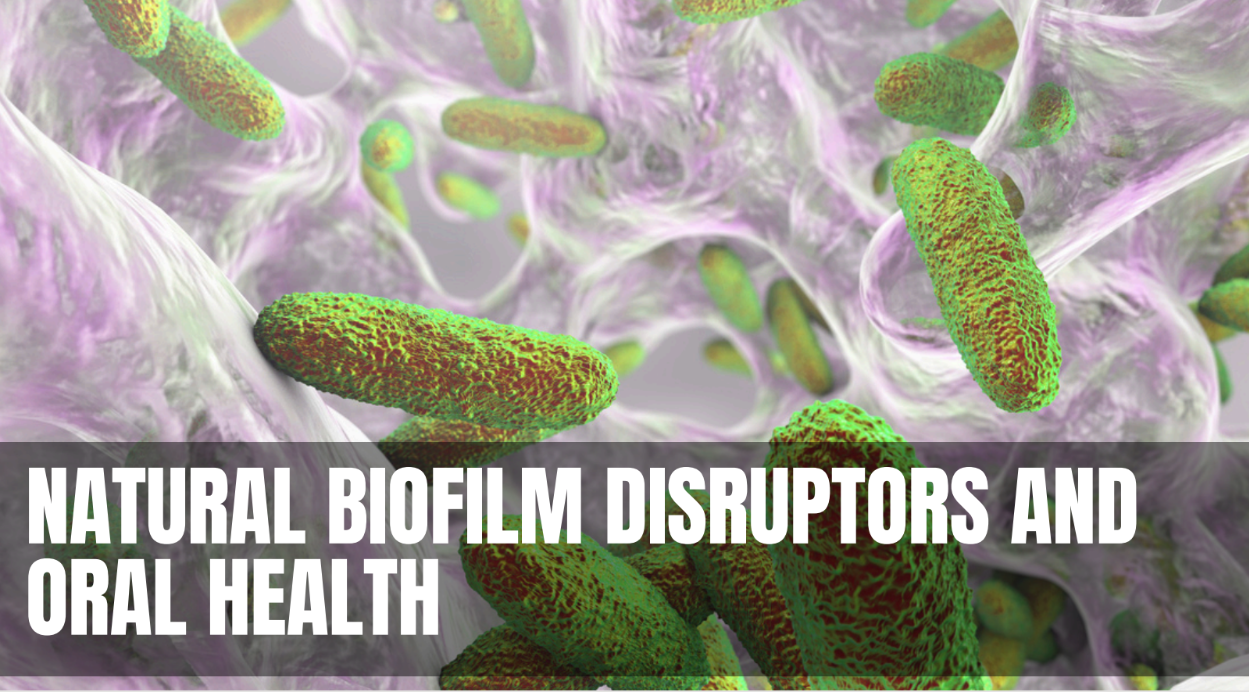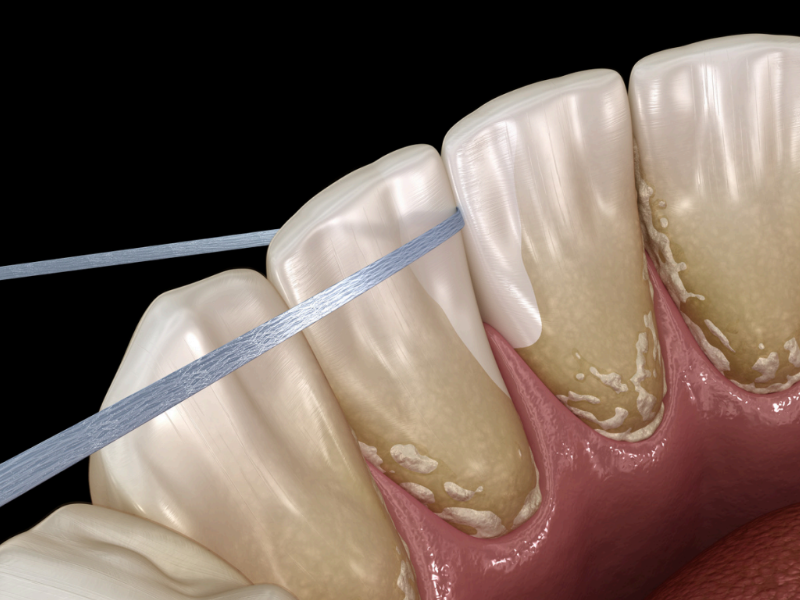
Friends:
As we have explored and discussed in the past several columns, Quorum Sensing helps bacteria communicate and coordinate their
behavior.
Many diseases of humans, plants, and animals are mediated by quorum sensing. Various approaches are being tried to inhibit this
communication to control the diseases caused by bacteria. The most immediate and conspicuous example of this process is right in
our mouths. Every day we deal with plaque, tartar, and gum sensitivities. When the bacteria first adhere to the surfaces on the
enamel and gum crevices, they start to proliferate when obtaining a certain amount of critical population growth.
Being fed, particularly sugar is like “growth-hormone steroids” for them!
As in the mouth, I assume high sugar or refined carbohydrate diet offers a similar principle of overgrowth in the intestines to certain
unwanted bacteria and yeasts–like in Candidiasis.
The process of “adhesion” is the first major initial step whether in the mouth or the gut wall. If no adhesion, no significant bacterial
population growth.

Quorum quenching or quorum sensing inhibition:
Peres, M.A.; Macpherson, L.M.D.; Weyant, R.J.; Daly, B.; Venturelli, R.; Mathur, M.R.; Listl, S.; Celeste, R.K.; Guarnizo-Herreno,
C.C.; Kearns, C.; et al. Oral diseases: A global public health challenge. Lancet 2019, 394, 249–260
The biofilm formation can be disrupted by disturbing the quorum sensing mechanism utilized by the various species of bacteria
forming the plaque bio-film together.
The inhibition of quorum sensing is commonly referred to as “quorum quenching.”
It initially meant stopping quorum-sensing autoinducers (ai) which turn on the bacteria or viruses to proliferate,
Quorum quenching is now commonly used in a more general sense to refer to any inhibition of quorum sensing due to the use of
enzymatic or non-enzymatic molecules.
Quorum sensing can be blocked by stopping the signal molecule production, destroying the signal molecule, and
preventing the signal molecule from binding to its receptor.
Quorum sensing blockage by molecules is produced by various plants, algae, and other organisms.
Various plants, algae, fungi, etc. produce molecules that might inhibit quorum sensing in bacteria. Some of the very impressive list is cited below which interesting and different mechanisms of action. There are many more with even more and more being recognized all the time:

- Horseradish
- Garlic
- Turmeric-curcumin
- Citrus flavonoids-flavonine naringenin
- Sponge Agelas oroides-alkaloid oroidin
- Red marine alga
- Grapefruit extract-furocoumarins, carotenoids,
- limonoids, pectin, and coumarin
- Nutmeg
- Sweet basil-muscarinic acid
- Garlic-disulfides and trisulphides
- Clove extract-eugenol6
- Clove extract-hexane and methanol
- Piper nigrum
- Coffee extract-caffeine
Other notable ones have different mechanisms of action of how they create quorum quenching.
For instance, cranberries–anti-inflammatory and inhibits the matrix building of the biofilm.
The cranberry proanthocyanins seem to exert anti-inflammatory effects in the oral cavity, through different mechanisms. They
appear to be able to inhibit the production of pro-inflammatory cytokines.
Luteolin is a flavone contained mainly in carrots, fennel, and pepper. In vitro and in vivo studies have shown that luteolin inhibits
the production of IL-6, TNF-α, and prostaglandin D2 by gingival fibroblasts.
Quercetin is found in grapes, apples, onions, etc., and greatly impacts inflammation and biofilm disruption. Furthermore, in vitro
studies show that quercetin inhibits the synthesis of TNF-α by oral macrophages. These beneficial actions demonstrate quercetin’s
protective role in countering inflammatory oral diseases.
Curcumin–the main polyphenol in turmeric, is often used as a natural remedy in the treatment of periodontal diseases due to its
anti-inflammatory power; therefore in the market, there are several curcumin-based toothpastes and mouthwashes
Epigallocatechin gallate (EGCG), the main polyphenol in green tea, seems to have an important antioxidant action, countering ROS
generation and exerting a powerful scavenger of free radicals in periodontitis. At the same time, ECGC stimulates antioxidant
defenses. A study by Hrishi et al. highlighted how the daily use of green tea-based toothpaste should increase glutathione-S-transferase activity in the gingival crevicular fluid of patients with CPD.
Genistein, the main isoflavone in soy, appears to be a powerful antioxidant and an inhibitor of nitric oxide synthesis. A study has
shown how injections of 20 mg/kg of body weight of genistein, in mouse models with periodontitis, protect cells from mitochondrial
damage and ROS accumulation and reduce the inflammatory cytokine levels in periodontal tissue.
Also related are compounds protecting against periodontal diseases including green and black teas, lycopene antioxidants as in
tomatoes, and the remarkable antioxidant resveratrol found in various botanicals and of course red wine.
Importantly, the very popular alcohol sugars, xylitol, and erythritol. most common examples are significant bio disrupters in bacteria
forming the oral biofilm by bacteria in the mouth.
Let the following abstract be our closure and a preview of the topic in our next installment:
Xylitol and erythritol inhibit real-time biofilm formation of Streptococcus mutans
June 2020
BMC Microbiology 20(1)
Background: Regular consumption of xylitol decreases the number of cariogenic streptococci in dental plaque. Both xylitol and
erythritol inhibited real-time biofilm formation by all the nine tested S. mutans strains. The sensitivity of the strains to inhibition
varied: some were more sensitive to xylitol and some to erythritol. Xylitol also modified the expression levels of gbpB, gtfB, gtfC, and
gtfD genes that are important in polysaccharide-mediated adherence of S. mutans. Conclusion: The erythritol- and xylitol-induced
inhibition of biofilm formation was only partly explained by a decrease in the number of viable S. mutans cells or the number of
polysaccharides in the biofilm matrix, suggesting that in addition to reduced proliferation also the matrix composition and thereby
the surface attachment quality of biofilm matrix may be altered by the polyols.
Over the past 3 articles, we explored the role and importance of microbial self-synthesizing biofilms as a crucial factor in health and
disease. Incorporating an understanding of the use of natural biofilm disruptors should not be taken as a singular panacea; the
inexorable adverse biofilms will still happen, and perhaps be more moderated depending on an individual’s dietary practices, but it
can offer broader, more proactive, optimizing nutritional strategies for our better overall health and immunity. Thank you.
